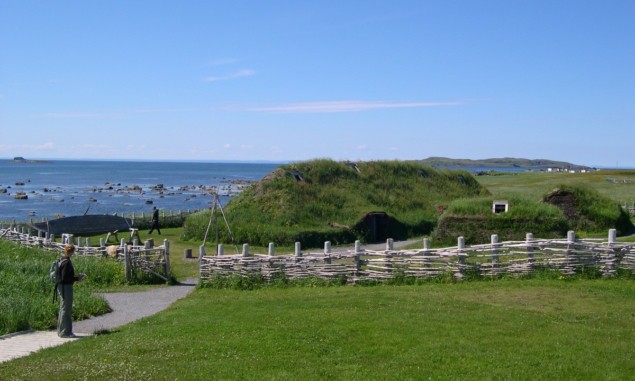
In the 1960s the Norwegian archaeologist Anne Stine Ingstad along with her explorer husband Helge Ingstad discovered the remains of a Viking settlement at L’Anse aux Meadows, which is on the northern tip of Newfoundland in Canada. The Vikings appeared to have been there about 1000 years ago, shattering the idea that Christopher Columbus and crew were the first Europeans to arrive in North America in 1492.
Now, Margot Kuitems, Michael Dee and colleagues at the University of Groningen in the Netherlands, along with researchers in Canada, have used radioactive isotope techniques to put an extremely precise date on the Viking settlement. According to a paper published in Nature this week, Vikings were living in Newfoundland in 1021 – exactly 1000 years ago.
The team could give such a precise date because of a fortuitous cosmic ray shower that is known to have occurred in 993. This event boosted the amount of radioactive carbon-14 in the environment – and some of that carbon was taken up by trees worldwide. This provides archaeologists with a distinct marker in the rings of ancient trees, signifying that the tree was growing in 993. By counting how many subsequent rings are present in a sample of wood, they can work out how many years passed from 993 to when the tree was cut down.
Wooden objects found at L’Anse aux Meadows had distinctive rings from 993, plus about 28 more – suggesting that they were made from wood that was cut in 1021. Writing in Nature, the team says, “Our new date lays down a marker for European cognisance of the Americas”. They add, “It also provides a definitive tie point for future research into the initial consequences of transatlantic activity, such as the transference of knowledge, and the potential exchange of genetic information, biota and pathologies”.
Rude awakening
Moving from the east coast of Canada to Golden, British Columbia in the west, where Ruth Hamilton had a shockingly close encounter with something from outer space. She awoke on 3 October to find a meteorite on the bed next to her. Hamilton told CBC News that she was woken by the sound of her dog barking, which was followed by an explosion of sound and debris as the space rock came through the ceiling and landed near her pillow – where her head had been seconds earlier.
Local construction workers reported seeing a bright flash in the sky at around the same time, leading physicist Peter Brown at Western University to conclude that the rock is probably a meteorite. Brown is now eagerly awaiting delivery of the object for further study.



